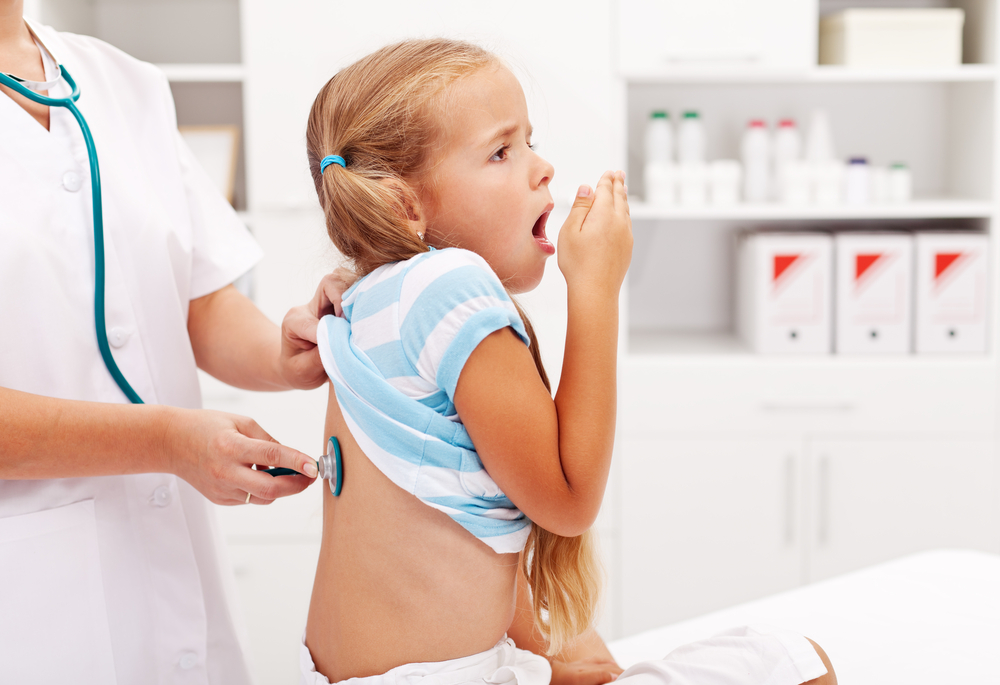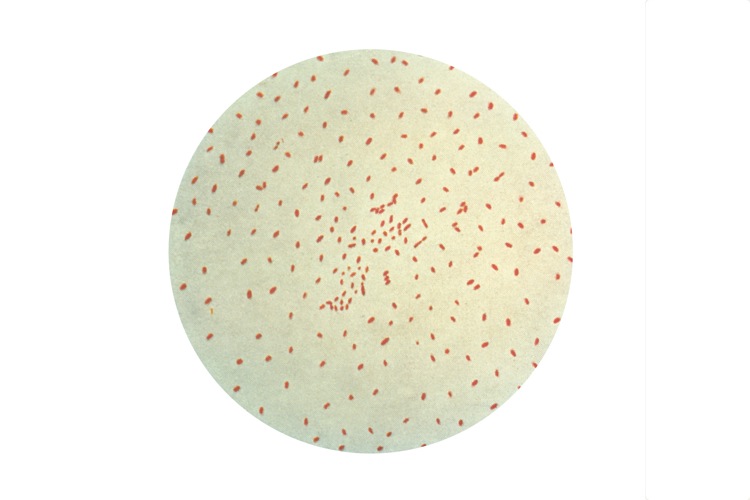Whooping Cough: Signs, Symptoms & Treatment

Whooping cough, also known as pertussis, is a bacterial infection of the respiratory tract that causes severe coughing. The disease is especially serious for babies.
Cases of whooping cough in the United States have been on the rise in recent years, and in 2012, the number of U.S. illnesses soared to more than 48,000 — more than any other year since 1955, according to the Centers for Disease Control and Prevention. In 2013, there was a decrease in cases, but so far in 2014, there has been an increase over the previous year.
Whooping cough is caused by the bacterium Bordetella pertussis. The microbes attach to tiny hairs in the respiratory tract called cilia, and release toxins that can cause swelling and damage cilia, according to the CDC.
Whooping cough symptoms
At first, a person with whooping cough will typically have coldlike symptoms, such as a runny nose and a low-grade fever. During this first stage of infection, there is no way for a doctor to tell the difference between whooping cough and a regular cold just by looking at the patient's symptoms, said Dr. Alejandro Jordan-Villegas, a pediatric infectious disease specialist at Arnold Palmer Hospital for Children in Orlando, Florida.
About one to two weeks later, infected individuals can experience severe and prolonged coughing. This coughing is so severe that it can cause vomiting, and sometimes it causes fainting and fractured ribs, Jordan-Villegas said.
The disease gets its name from the "whoop" sound that a person (typically a child) makes when he or she gasps for air after a coughing fit. However, not everyone with whooping cough will make this sound — teens and adults typically don't, according to the CDC.
The coughing fits can last a long time, up to 10 weeks or more, and the entire illness usually lasts about 12 weeks, Jordan-Villegas said.
Instead of a cough, infants may have apnea (pauses in breathing).
Whooping cough transmission
Whooping cough is contagious, meaning it is spread from person to person. Transmission typically happens when a person with pertussis coughs or sneezes, and another person nearby breathes in the bacteria.
Adults who have been vaccinated against pertussis may have more mild symptoms of the disease, and so they may think they have a regular cold and not go to the doctor, Jordan-Villegas said. But adults who have undiagnosed whooping cough can then transmit the disease, often to children who haven't been vaccinated, Jordan-Villegas said. That's why it's so important for adults to get their booster shot, and for children and teens to finish the vaccination series, Jordan-Villegas said.
Whooping cough diagnosis
Whooping cough can be diagnosed by taking a nose or throat swab, and then culturing the sample to see if whooping cough bacteria grow, Jordan-Villegas said. However, because this process takes a long time, doctors often use a molecular technique that amplifies a gene of the bacteria, he said.

Whooping cough in infants
Whooping cough is most serious in infants — about 50 percent of babies less than a year old who are sick with whooping cough will need to be treated in a hospital, and 25 percent of hospitalized babies will develop a lung infection, according to the CDC.
Of the 255 people who died from whooping cough between 2000 and 2012, 221 (87 percent) were less than 3 months of age, the CDC says.
Young babies are particularly vulnerable to whooping cough because they cannot be vaccinated against the disease until they are 2 months old. However, there are still ways to protect infants from whooping cough, discussed in the "whooping cough vaccine" section below. Parents should also keep infants away from anyone with cold/cough symptoms, the CDC says.
Whooping cough vaccine
The recommended whooping cough vaccine for children is the DTaP (diphtheria, tetanus and pertussis) vaccine. Children should receive a series of five vaccinations at ages 2, 4, 6 and 15 to 18 months, and 4 to 6 years, the CDC says.
Teens should get a whooping cough booster shot, called Tdap, when they are 11 or 12 years old.
Adults ages 19 and older should get a Tdap shot in place of one of their tetanus shots, which should be given every 10 years, the CDC says.
To protect infants before they are 2 months old, the CDC recommends that women get vaccinated against whooping cough during each pregnancy. It is thought that a pregnant women's antibodies are transferred to the fetus, which protects them once they are born, the CDC says. Family and friends who plan to have contact with very young infants should also get a Tdap booster before they visit the newborn, the CDC recommends.
In 1997, the United States introduced a newer version of the whooping cough vaccine, called the acellular pertussis vaccine. While this newer vaccine is thought to cause fewer side effects than the old, the protection offered by the newer vaccine fades more quickly — within a few years, according to a 2011 study, and several other studies. This waning immunity may be in part responsible for spikes in whooping cough cases among teens in recent years. Still, experts remain unsure of whether another whooping cough booster shot should be added to the vaccination schedule.
However, if a vaccinated child does develop pertussis, the child's condition is usually less serve if he or she is up to date with the pertussis vaccinations.
Still, some researchers have proposed to bring back the old version of the vaccine, called the whole-cell pertussis vaccine. In a 2016 study, researchers modeled what would happen if children received one dose of the whole-cell vaccine, followed by four doses of the acellular vaccine in early childhood. The study suggested that this "combined" vaccination strategy could reduce the rate of whooping cough infections by up to 95 percent, and save millions of dollars in health care costs.
But some experts are skeptical that parents would accept bringing back the whole-cell pertussis vaccine, because this vaccine has a higher rate of side effects than the acellular vaccine. These side effects are rare, but include fever and seizures. Overall, the 2016 study found that the combined vaccination strategy would lead to a 96 percent decrease in hospitalizations due to either whooping cough or vaccine-related side effects.
Whooping cough treatment
People who get a diagnosis of whooping cough are typically treated with antibiotics for five days, Jordan-Villegas said. If the condition is treated early — in the first stage of the disease — the antibiotics may make the condition less severe. In the later stages of the disease, when the condition is most often diagnosed, antibiotics usually don't help with symptoms, but they are still given because they can reduce the likelihood that the disease will be spread to others, Jordan-Villegas said.
Follow Rachael Rettner @RachaelRettner. Follow Live Science @livescience, Facebook & Google+.
Additional resources
- Learn more about whooping cough vaccination from the CDC.
- The Mayo Clinic offers tips for preventing whooping cough.
- The National Library of Medicine reviews the evidence from 12 studies about the effect of treatments for cough in patients with whooping cough.
Sign up for the Live Science daily newsletter now
Get the world’s most fascinating discoveries delivered straight to your inbox.

Rachael is a Live Science contributor, and was a former channel editor and senior writer for Live Science between 2010 and 2022. She has a master's degree in journalism from New York University's Science, Health and Environmental Reporting Program. She also holds a B.S. in molecular biology and an M.S. in biology from the University of California, San Diego. Her work has appeared in Scienceline, The Washington Post and Scientific American.
Flu: Facts about seasonal influenza and bird flu
What is hantavirus? The rare but deadly respiratory illness spread by rodents










